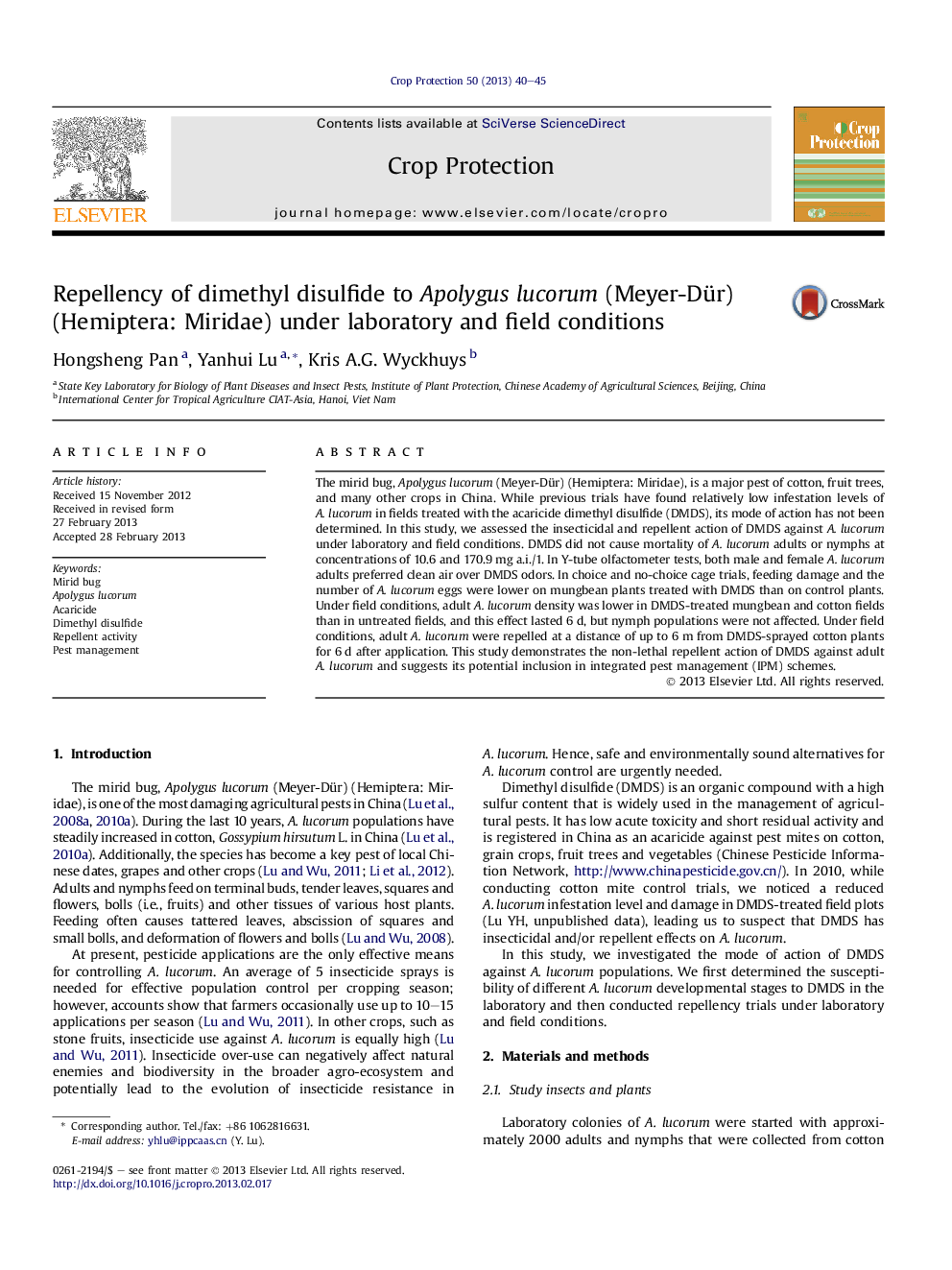| کد مقاله | کد نشریه | سال انتشار | مقاله انگلیسی | نسخه تمام متن |
|---|---|---|---|---|
| 4505978 | 1624337 | 2013 | 6 صفحه PDF | دانلود رایگان |

• The acaricide Dimethyl disulfide (DMDS) did not cause the mortality of the mirid bug, Apolygus lucorum.
• DMDS greatly repelled adult A. lucorum, and its effect lasted 6 d in the fields.
• Adult A. lucorum were repelled at a distance of up to 6 m from DMDS-sprayed plants.
The mirid bug, Apolygus lucorum (Meyer-Dür) (Hemiptera: Miridae), is a major pest of cotton, fruit trees, and many other crops in China. While previous trials have found relatively low infestation levels of A. lucorum in fields treated with the acaricide dimethyl disulfide (DMDS), its mode of action has not been determined. In this study, we assessed the insecticidal and repellent action of DMDS against A. lucorum under laboratory and field conditions. DMDS did not cause mortality of A. lucorum adults or nymphs at concentrations of 10.6 and 170.9 mg a.i./1. In Y-tube olfactometer tests, both male and female A. lucorum adults preferred clean air over DMDS odors. In choice and no-choice cage trials, feeding damage and the number of A. lucorum eggs were lower on mungbean plants treated with DMDS than on control plants. Under field conditions, adult A. lucorum density was lower in DMDS-treated mungbean and cotton fields than in untreated fields, and this effect lasted 6 d, but nymph populations were not affected. Under field conditions, adult A. lucorum were repelled at a distance of up to 6 m from DMDS-sprayed cotton plants for 6 d after application. This study demonstrates the non-lethal repellent action of DMDS against adult A. lucorum and suggests its potential inclusion in integrated pest management (IPM) schemes.
Journal: Crop Protection - Volume 50, August 2013, Pages 40–45